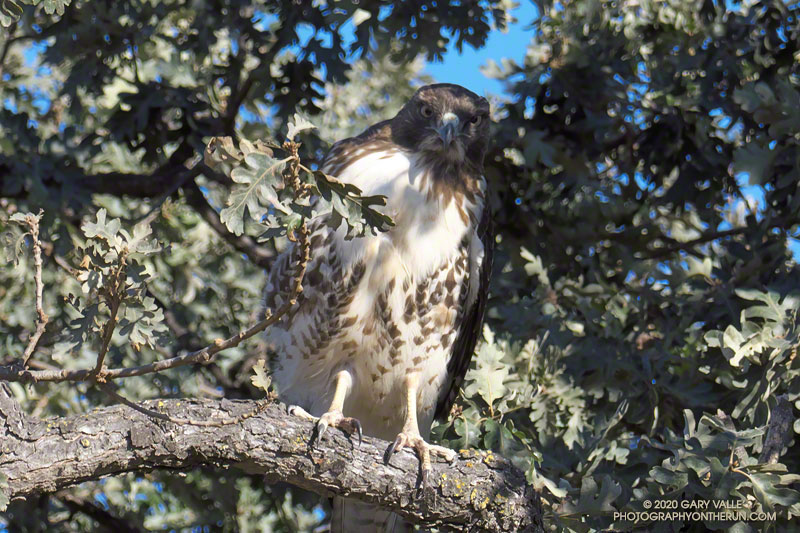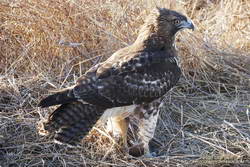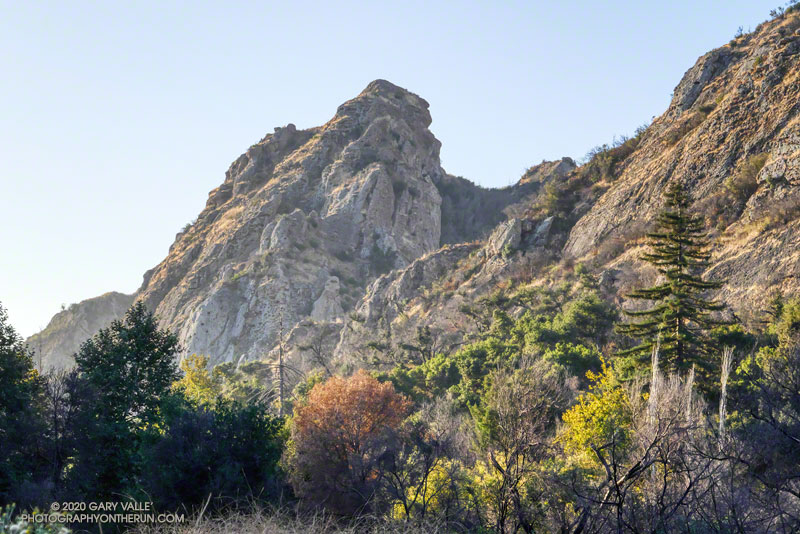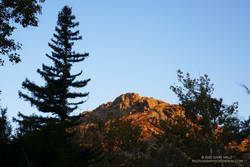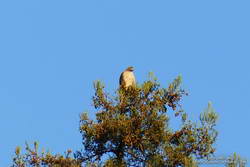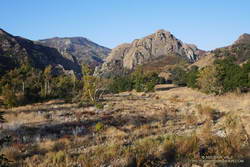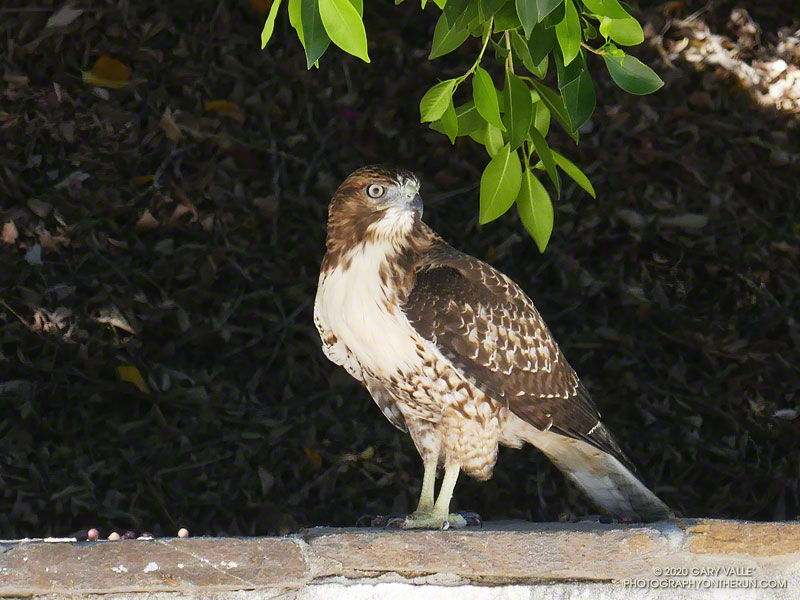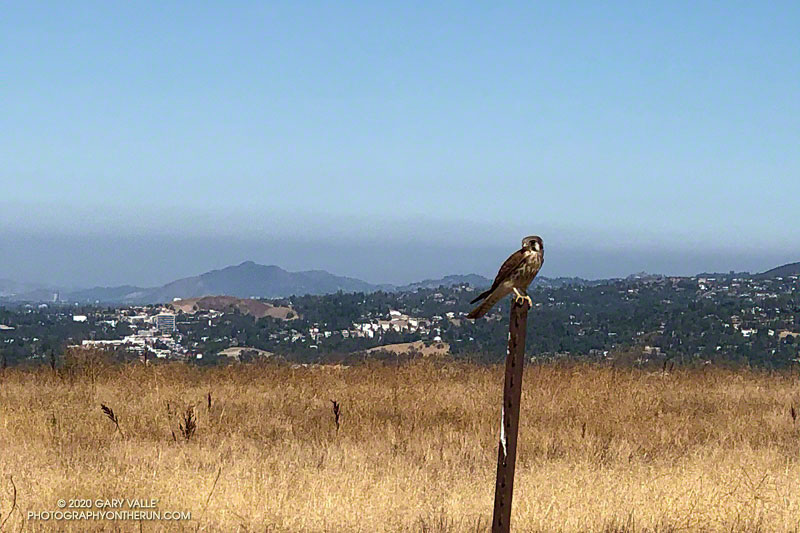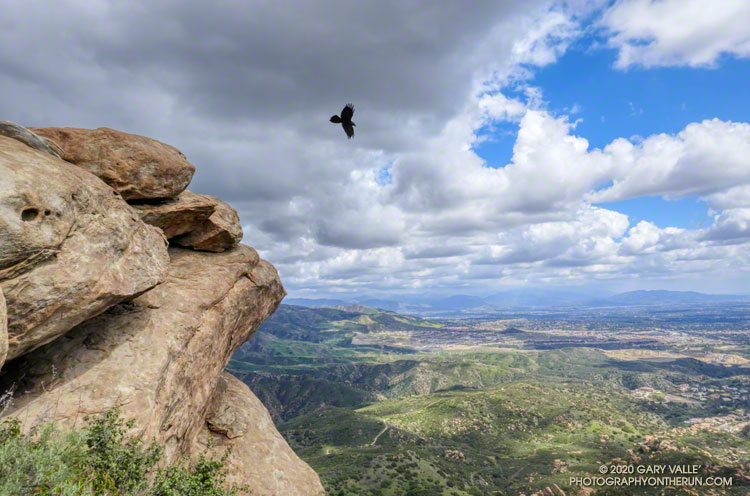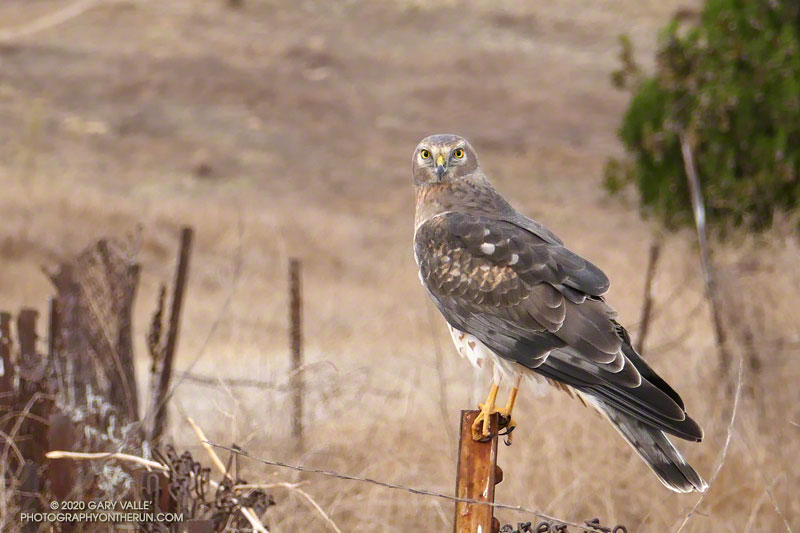
I turned the corner, and about 60 yards away, a large, gray hawk was perched on a fencepost. It looked like it might be a male northern harrier. I stopped and snapped a couple of photos. If it flew away, at least I would be able to confirm the ID.
I was running on Lasky Mesa, a unique oak and grassland area in Upper Las Virgenes Canyon Open Space Preserve. Better known as Ahmanson Ranch, the area is adjacent to West Hills, a suburb of Los Angeles. The open space park is a haven for several species of raptors, including red-tailed hawks, American kestrels, northern harriers and white-tailed kites.
In my experience, northern harriers are shy birds, and in most of my previous encounters, the birds have been on the wing. Moving closer, I walked a few steps, took a photo, walked a few more steps, then took another shot. Astonishingly, I was only about 20 yards from the bird, and it did not fly.
That’s when I heard the fast-paced footfalls of another runner approaching from behind. I held my breath and continued to photograph the harrier. Whether spooked by my presence or the approaching runner, the bird had had enough, and he finally took flight.
Northern harriers, and harriers in general, are unusual birds. They have evolved to subsist in open areas such as grasslands and marshes. Their physical features reflect the requirements of efficiently hunting in these habitats.
Northern harriers are adapted to use vision and sound to hunt their prey. Like owls, they have a facial ruff and asymmetric ears that are used to amplify and locate sounds made by prey. They also are reported to have feather adaptations for flying more quietly.
They are powerful, acrobatic birds. Their wings and tail are extraordinarily large for their body size. In aerodynamic terms, they use variable geometry to maximize lift or glide as needed. In slow flight, they can turn on a dime, leaving virtual skid marks in the sky. During strong Santa Ana winds, I’ve seen them dynamically soaring (like an albatross) on slightly-sloped Lasky Mesa.
Previously, I photographed a pair of northern harriers hunting on Lasky Mesa after sunset. It was a surreal experience to watch them in the diminishing light. They appeared to be working cooperatively, and their hunt was successful.
Some related posts: Northern Harrier Turning to Strike, Another Red-tailed Hawk Encounter, Kestrel Encounter

